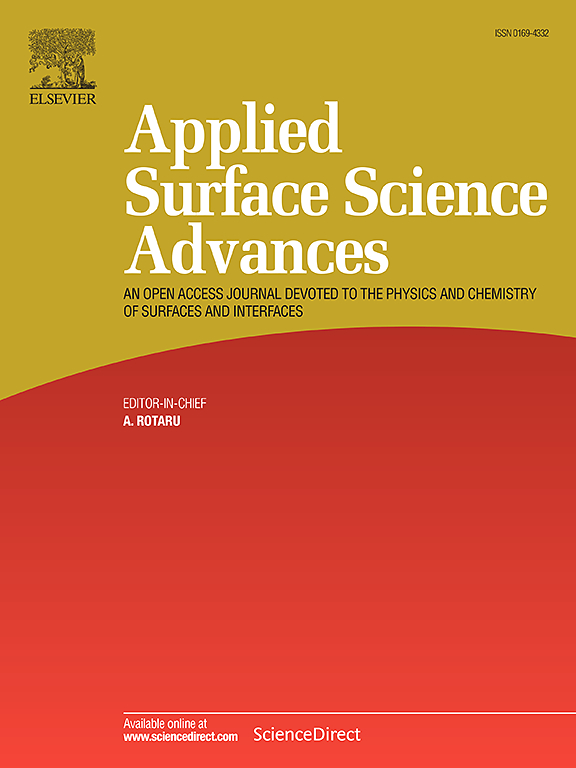Nanoscale Engineering of Si/BDD/TiO2 heterostructure interfaces to enhance photoelectrochemical performance
IF 7.5
Q1 CHEMISTRY, PHYSICAL
引用次数: 0
Abstract
The photocatalytic efficiency of BDD/TiO2 photoelectrodes is enhanced by increased electrical fields due to nanostructuring of their interfaces. The interfaces of Si/BDD/TiO2 heterostructure electrodes were engineered at the nanoscale, combining microstructuring of the Si substrate with nanostructuring of the boron-doped diamond (BDD) film. The hierarchical design increased the generated photocurrent by 6.5 times compared to ITO/TiO2 electrodes and 4.6 times compared to unstructured BDD/TiO2 electrodes. Both micro- and nanostructuring also lowered the threshold potential for photocurrent onset by 0.2 V, and nanostructuring also delayed photocurrent decay at higher applied potentials. The enhancement is related to a novel finding concerning the electrical field enhancement effect at the tip-like structured interfaces, which greatly improves the charge transfer through the heterostructure. In addition, the structured electrodes showed significant improvements in stability and resistance to delamination, making them highly competitive with state-of-the-art BDD/TiO2 photoelectrodes for water treatment and hydrogen production applications.
Si/BDD/TiO2异质结构界面的纳米工程以提高光电化学性能
BDD/TiO2光电极的界面纳米化使得其光催化效率得到提高。在纳米尺度上设计了Si/BDD/TiO2异质结构电极的界面,将Si衬底的微结构与掺硼金刚石(BDD)薄膜的纳米结构相结合。与ITO/TiO2电极相比,分层设计产生的光电流增加了6.5倍,与非结构化BDD/TiO2电极相比增加了4.6倍。微结构和纳米结构都降低了0.2 V的光电流起始阈值电位,并且纳米结构也延迟了高施加电位下的光电流衰减。这种增强与一个新的发现有关,即在尖状结构界面处的电场增强效应,极大地提高了电荷通过异质结构的转移。此外,结构电极在稳定性和抗分层性方面也有了显著的改善,这使得它们在水处理和制氢应用方面与最先进的BDD/TiO2光电极具有很强的竞争力。
本文章由计算机程序翻译,如有差异,请以英文原文为准。
求助全文
约1分钟内获得全文
求助全文

 求助内容:
求助内容: 应助结果提醒方式:
应助结果提醒方式:


